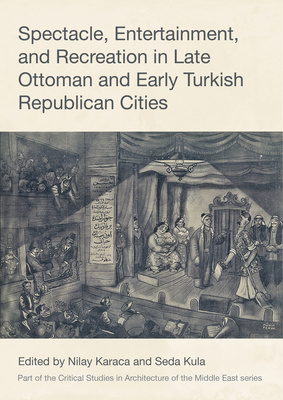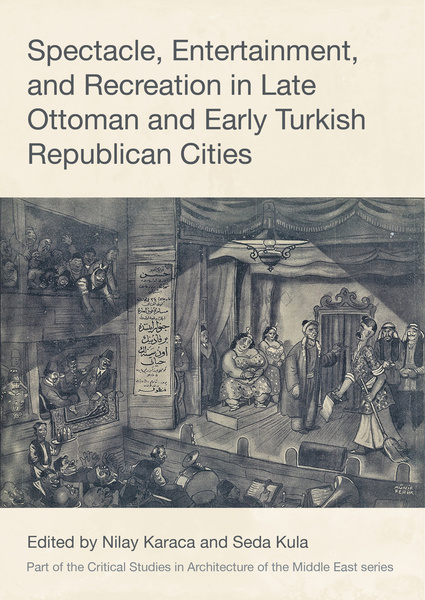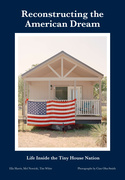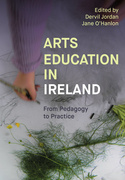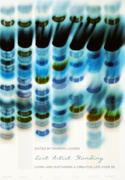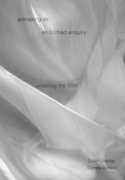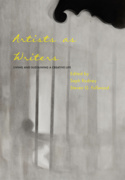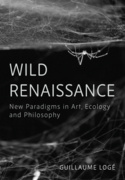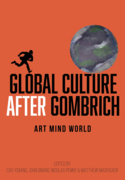Spectacle, Entertainment, and Recreation in Late Ottoman and Early Turkish Republican Cities (Book)
An analysis of entertainment, spectacle and recreation activities and spaces of late Ottoman and early Turkish cities, discussing their evolution, and significance for the urban life as well as their interaction with society’s modernization processes, through contributions of numerous authors portraying diverse urban environments. 91 b/w illus.
Free sample: Introduction by Seda Kula
Edition
The short lived Tulip Era breathed a new life into Ottoman social life and novel elements of art, architecture and new spaces of leisure and entertainment that both men and women could participate and enjoy emerged during the early 18th century. Later, during the 19th century, triggered by the state policies to establish closer relationship with European states, as well as by the royal urge to be seen and felt by their subjects more intensively and more interactively, these novelties in social life were predominantly adopted and instrumentalized by the ruling elite and found their reflection in major urban centers of the empire. With the emulation of the ruling elite by various classes and due to an increasing social mobility among classes, the new forms of entertainment and recreation gradually permeated into the rest of the society and ended up having a long-term impact on the Ottoman society.
Hence, during the 19th century, a modern urban life in Ottoman cities has emerged, shaped by these new forms of recreation and entertainment and by new regimes of visibility. Ripping open of their traditional nuclei in the second half of the 19th century, these urban centers accommodated –along with new trade, financial, industrial and residential facilities– different types of entertainment and recreation, ranging from opera to cinema and from concerts to sports. Thus the late-Ottoman cities witnessed the emergence of new architectural and urban facilities, such as theatres, opera houses, clubs, performance halls, sports fields, and public parks. These spaces of entertainment and spectacle represented the modernizing face of the empire and also embraced by the Republican elite after the foundation of the young Turkish Republic. These public/social spaces were utilized for the making of the modern Turkish nation.
This edited volume offers an analysis of the forms and spaces of spectacle, entertainment, and recreation during the late Ottoman and early Republican eras. Each article focuses on different forms on spectacle, entertainment or recreation in varied cities of Ottoman Empire or Republican Turkey. The edited volume aims not only to shed light on how such urban or architectural spaces were developed and shaped, but also to scrutinize their impact on social, cultural, urban life in the modernizing Ottoman Empire and Republican Turkey.
Part of the Critical Studies in Architecture of the Middle East series.
Seda Kula has her PhD in architectural history from Istanbul Technical University and is currently teaching architectural history, theory and design as Associate Professor in the Department of Architecture at Gebze Technical University, Türkiye. Aside her early works on 14th-15th century Ottoman architecture, her PhD and current research focus on late Ottoman architecture and 19th century architectural and urban history.
Nilay Karaca is an architectural historian with a focus on the urban culture of Istanbul, late-Ottoman history, museum studies, and court culture. She holds a BArch from Middle East Technical University and a Ph.D. in History from Boğaziçi University. Özlü published numerous articles and book chapters and edited books and special issues. After pursuing her postdoctoral research at the University of Oxford (2019–21), she started working at Istanbul Bilgi University, Department of Architecture, teaching architectural design, history, and theory.
List of Figures
Acknowledgements
Foreword – Nazan Maksudyan
Introduction – Seda Kula
Part 1. New Understandings of Landscapes and Spaces of Recreation
Chapter 1: The Making of Gülhane Park: From Royal Gardens to Public Spaces in Late Ottoman Istanbul – Nilay Karaca
Chapter 2: ‘So, I’ve Become the Chief Birdman!’: Visions of a Public Zoological Garden in Istanbul and Ebüzziya’s Field Trip – Semra Horuz
Chapter 3: The Aesthetic of Prosperity: A Study of the Landscape Paintings of the Military Painter Halil Paşa (1857–1939) – Ekin Akalın
Chapter 4: Becoming In-between: The Experience of Modernity in Kuşdili – Bora Yasin Özkuş
Urban Reflections
I. The Transformation of Recreation Areas in the City of Adana: From Formal Parks to Casual Spaces – F. Duygu Saban
II. The People’s Garden of Mersin: From Entertainment to Ceremonial Space – Tülin Selvi Ünlü
Part 2. Entertainment, Diversity, and Diversion
Chapter 5: Direklerarası as the Stage of Entertainment and Sociability in Late Ottoman Istanbul – Fatma Tunç Yaşar
Chapter 6: A Leisurely Stroll in Allied-Occupied Istanbul: Urban Encounters between Muslims, Non-Muslims, and Occupation Forces (1918–1923) – Ceren Abi
Chapter 7: The City, the Sea, and the Subaltern: The Urban Subcultures of 167 Galata and Piraeus, 1880–1930 – Erik Blackthorne-O’Barr
Urban Reflections
III. Spatial and Cultural Dimensions of Entertainment in a Modernizing Ottoman City: The Hotels of Nineteenth-Century Bursa – Figen Kıvılcım Çorakbaş
IV. Class, Resilience, and Entertainment in Beirut (1915–2021): A Short Commentary – Ümit Fırat Açıkgöz
Part 3. Spectacle Venues in the Cityscape
Chapter 8: Leading Panorama-Diorama Initiatives in the Ottoman Empire – Fatma Ürekli
Chapter 9: The Transformation of Entertainment Activities and Theatres in Late Ottoman Izmir – Cenk Berkant
Chapter 10: The Role of the Bourgeoisie in the Cultural Transformation of the City: The Case of Süreyya Paşa in Istanbul – Neslişah Leman Başaran Lotz
Chapter 11: Film Spectacles and Cinema Halls in Late Ottoman Cities – Seda Kula
Urban Reflections
V. Leisure, Entertainment, and Spectacle in Late Ottoman Salonica – Sotirios Dimitriadis
VI. Spectacle in Trabzon During the Late Ottoman and Early Republican Period: Kostaki Theatre and Pilosyan Cinema – Ömer İskender Tuluk
Epilogue: Built, Unbuilt, and Demolished: A Requiem for Leisure – Nilay Karaca
Notes on Contributors
Index

